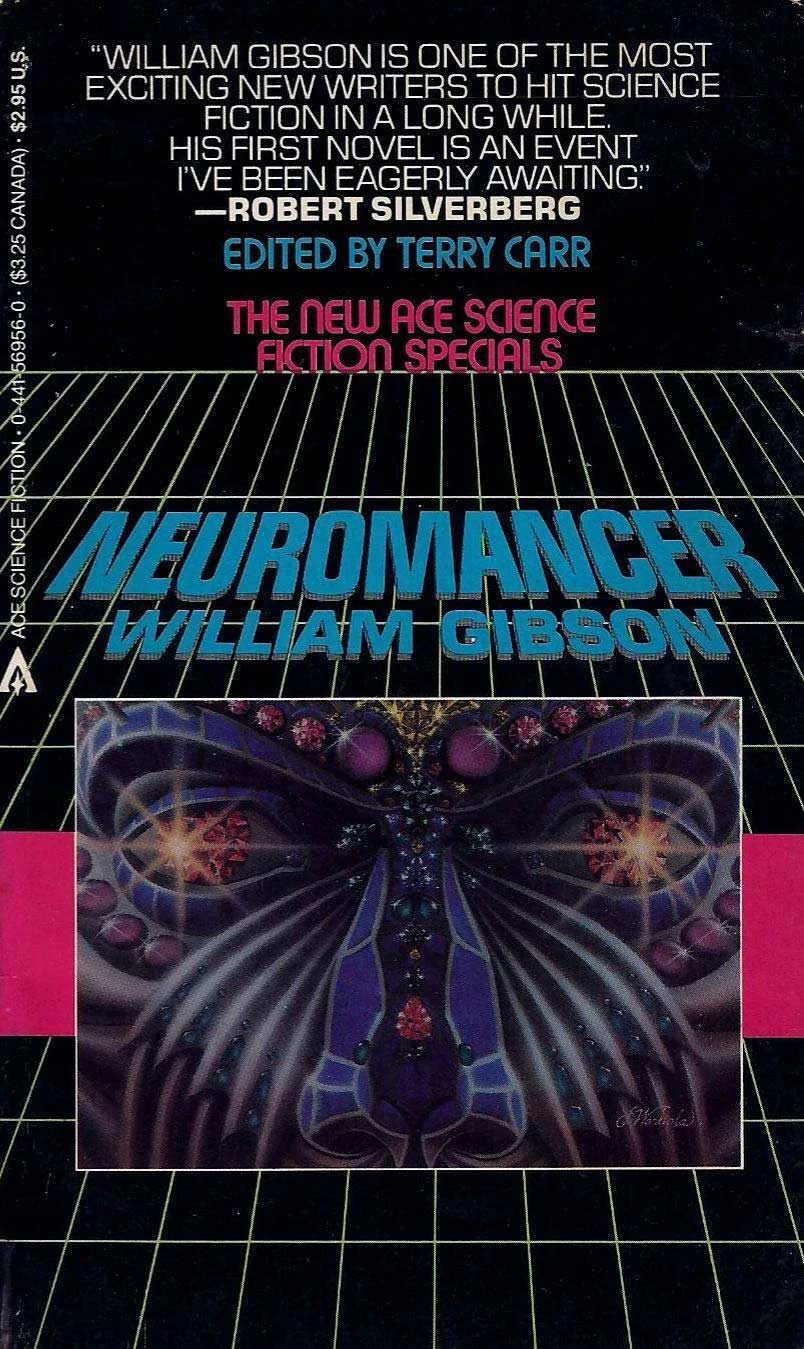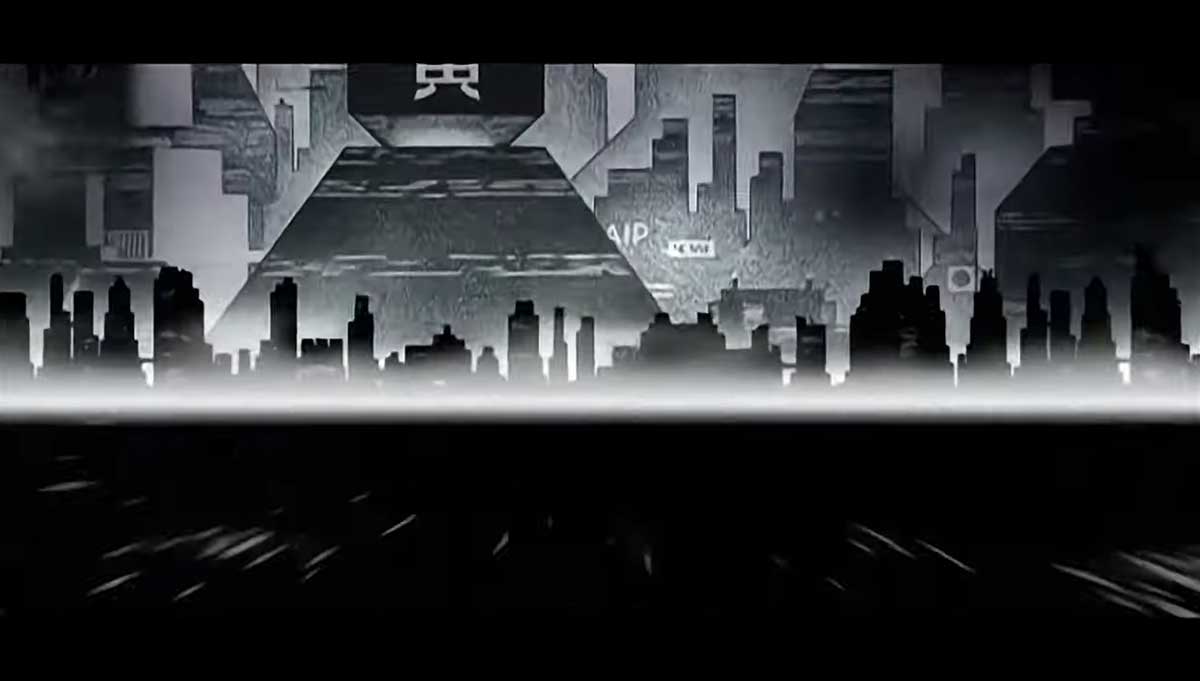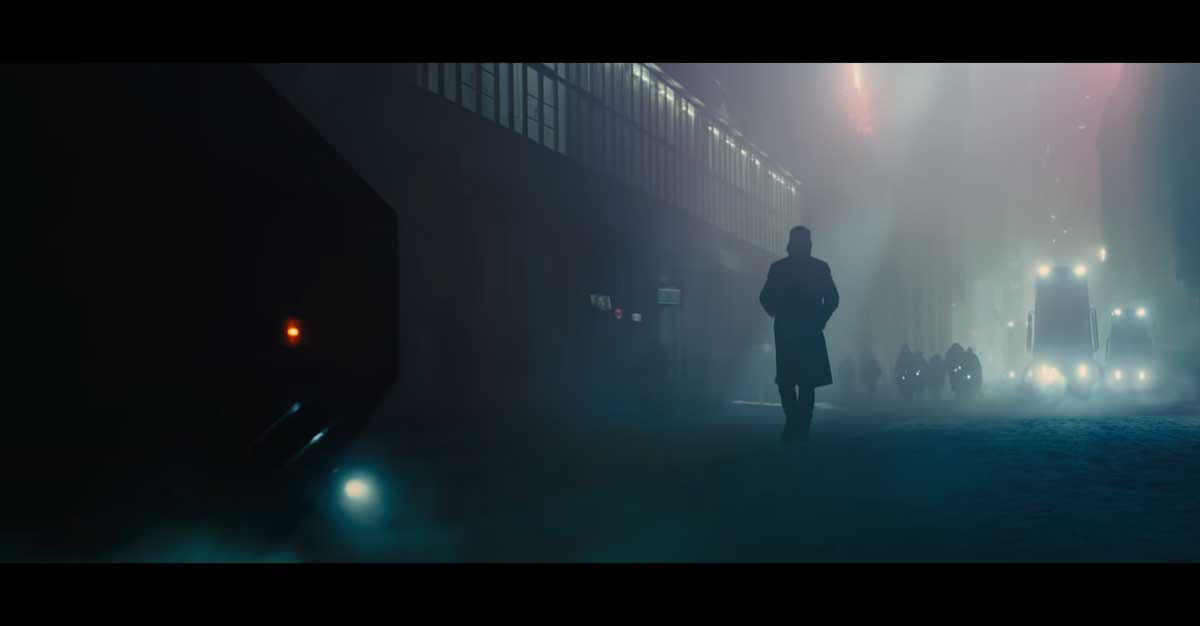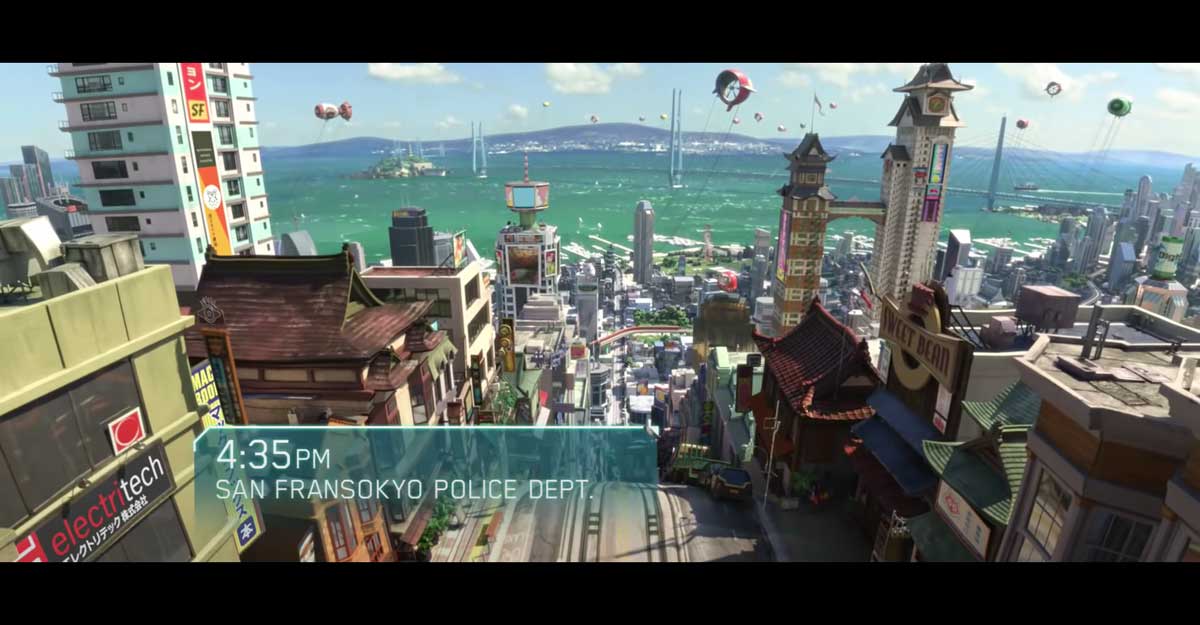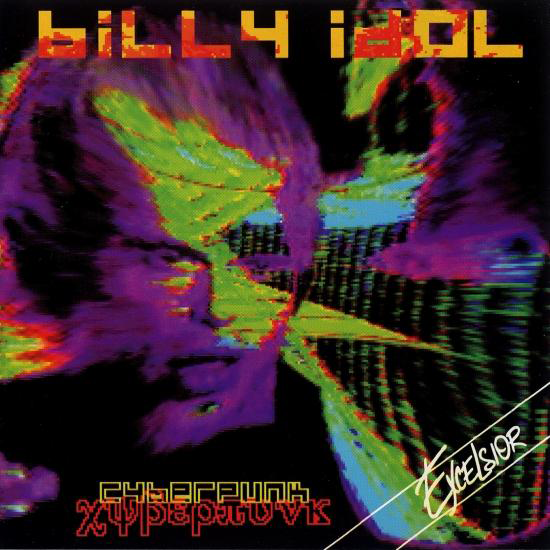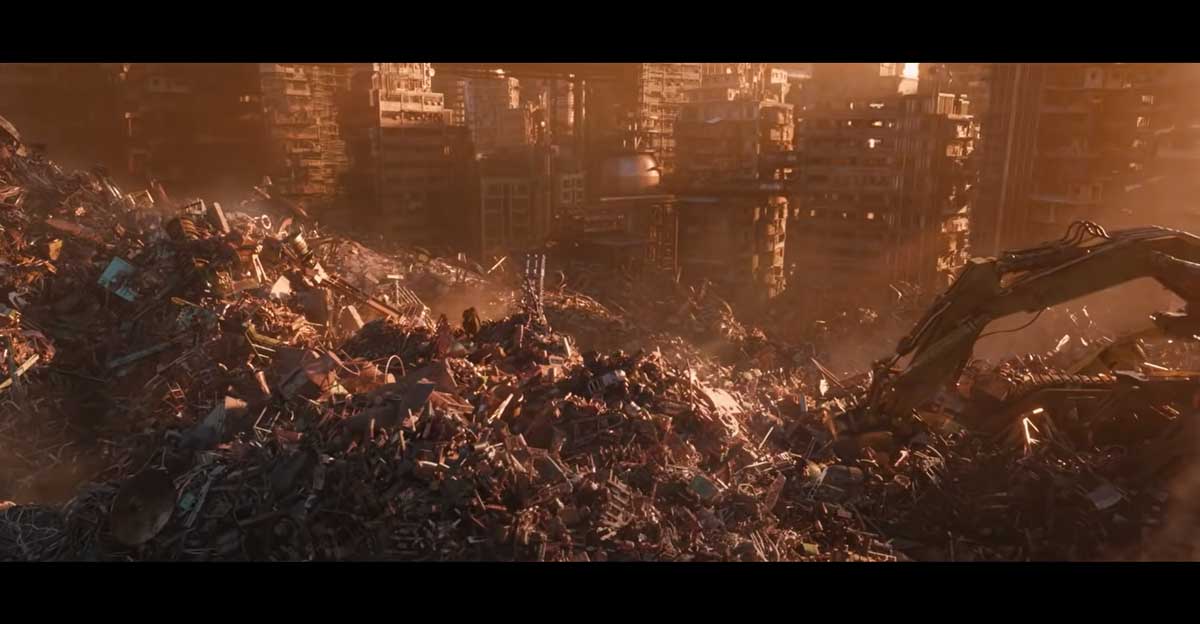Cyberpunk aesthetic – do cyborgs dream about the fall of the system?
Share this article

In recent years, pop culture has been increasingly reaching out for cyberpunk aesthetic. The Cyberpunk 2077 game, released at the end of 2020, probably had the greatest impact on the rise in its popularity. However, we see the aesthetics increasingly often on our screens, and not just in video games – it’s enough to mention the film adaptations of novels from years ago, such as the TV series: Altered Carbon and The Peripheral. This is an interesting phenomenon, especially considering that it’s not the first time cyberpunk has been a huge hit – now, almost 40 years after this term was coined.
That’s because 1983 may be considered the birth date of cyberpunk – and back then Bruce Bethke, an American science-fiction writer, published a story about teenage hackers in the Amazing Stories magazine. It was very significantly titled Cyberpunk. Years later, its author posted on his website the essay The Etymology of “Cyberpunk”, in which he wrote about the genesis of the idea – it was a situation where some teenagers hacked a computer in the shop where Bethke used to work. The unpleasant surprise got him thinking: what would a future be like in which kids learned the language of computers as quickly as their native language?
Bruce Bethke became the godfather of cyberpunk aesthetic – in the abovementioned essay, he even regretted that he hadn’t reserved the right to this term! However, it wasn’t his surname that became synonymous with this genre. For in 1984, a novel was published that still forms the foundation of cyberpunk as a whole: Neuromancer, by William Gibson. Its action takes place at some point in the future (reportedly around 2035) in an underworld of hackers, drug addicts and mercenaries. To give you an idea of how influential the work is, it’s enough to mention that this novel is where the term cyberspace comes from – moreover, in the novel it was named… the matrix. Sound familiar?
But what is this cyberpunk aesthetic? It’s difficult to give an exhaustive answer to such a question – cyberpunk is a vague term that can be understood in at least three ways.
First, cyberpunk is a genre of science fiction literature (and in any other kind of art referring to Sci-Fi) as well as the aesthetics connected with it. Cyberpunk stories most often tell of a world in which advanced technology is accompanied by far-reaching social inequalities, as expressed by the maxim often cited in the context of this trend: high tech, low life. Powerful corporations control the natural resources, but experience constant resistance from hackers, cyberpunks and people living on the fringes of the law. However, this resistance rarely results from idealism. It’s usually an attempt to secure their own interests or, most often, just to survive in a harsh and hostile world.
Cyberpunk inspirations are becoming increasingly influential pop culture – one example is the music video for the song Adieu by Rammstein.
Second, cyberpunk is a real subculture that existed mostly in the late ‘80s and early ‘90s, obviously inspired by the sub-genre of science fiction described above. In 1987, Timothy Leary, one of the fathers of the psychedelic revolution of the 1960s, wrote about cyberpunks as people who use technology for their own ends, completely different from the ways envisaged and accepted by big capital. Back in those days – the age of development of the IT sector and the popularisation of a global network – such words were certainly falling on fertile ground. It turned out that this fertile ground was the fringes of gothic subculture, where an exotic alliance between geeks and industrial music fans was born. This movement even lived to see its own ‘media’ – the High Frontiers magazine and its successor, Mondo 2000. These journals were full of articles about electronic music, essays about clashes between technology and counterculture, but also nootropic advertisements.
Third: cyberpunk is a certain diagnosis of social reality, both that of a few decades ago and that of today. This term is sometimes used as a synonym for potential, emerging (not to say: already present) capitalist dystopia – a world in which ever more powerful technology not only fails to prevent (or sometimes even exacerbates) global problems: the climate crisis, wars, poverty and exploitation. Anyway, reality often imitates fiction. Generally, as humanity, we already live in the cyberspace predicted by Gibson. We form relationships in it, create an economy and commit crimes – if you think about it, it still sounds futuristic, even if this cyberspace is still accessed through a web browser more often than through 3D goggles.
So is a return of cyberpunk aesthetic to pop culture a manifestation of the anxiety about what we, as humanity, are headed for? Perhaps, but before we try to give the answer, let’s look at cyberpunk as narration and aesthetics.
Cyberpunk aesthetic is a thoroughly urban. You can even say that these cities, which are huge, amazing and frightening, are one of the main characters of cyberpunk stories, no matter whether you think of Night City in Cyberpunk 2077, Neo-Tokyo in Akira or Los Angeles in Blade Runner. This manifests in the vertical composition of the presented worlds and their virtual representations.
Cyberpunk megacities have their ‘top’ skyscrapers owned by corporations or the state authorities dependent on them, and it is where the socio-economic elite, who are quite often depraved, work and live. These monumental buildings with their stylish and sometimes eccentric interiors are specific monuments to power, hubris and frighteningly large capital. Their architecture sometimes resembles buildings very well known from contemporary megacities, and occasionally they relate to less clear associations, such as ancient ziggurats or pyramids.
Cyberpunk cities also have their ‘down’ – dense districts, located at the foot of skyscrapers, where ordinary people live. In the best case, they consist of grey blocks of flats with many tiny rented apartments; in the worst case, they are slums. They are also the space for murky business – in the cheap restaurants, clubs and houses of prostitution, shady deals and transactions take place, the scale of which is, obviously, incomparable to what goes on ‘at the top’. “The down” isn’t a fully autonomous environment – it’s often infiltrated by oppressive police apparatus, its space dominated by tempting billboards, promoting either hedonistic consumption or unrealistic aspirations.
(By the way, it is worth mentioning that the creators of cyberpunk-like narrations often move tensions between ‘the top’ and ‘the down’ a step further: in the movies Elysium and Alita: Battle Angel, the financial and technological elite evacuate from the surface of the devastated Earth to sky cities.)
Such an image of extremely divided, horrible cities is not an original cyberpunk idea. Its origin can be found even in the early decades of the 20th century, or, more specifically, in the tendency known in filmmaking as German expressionism. For example, in the 1926 movie Metropolis, the director Fritz Lang presents a surprisingly ‘cyberpunk’ vision of a city where the privileged social class lives above the basements intended for workers. Another aesthetic from decades ago to which cyberpunk owes an aesthetic debt is the cinema noir of the 1940s and 1950s – the neon-lit, rain-wet street on which a life-weary private detective walks is a key image for the noir trend, and one that found its way perfectly into the cyberpunk aesthetic.
When it comes to the way of presenting the city in cyberpunk, the inspiration taken from 20th-century cinema is only one side of the coin. The other source of cyberpunk images in this topic are real cities in Eastern Asia. From the point of view of the Western world in the late 20th century, one should search for the future neither in America nor – especially – in Europe, but in Asia. It was the megacities in Japan that provided an example of what cities in the rest of the world may look like in the future. And they still do – it’s enough to mention the slight cyberpunk children’s animation, Big Hero 6, which takes place in the city with a meaningful name San Fransokyo! In recent years, futuristic imagination has increasingly often taken inspiration from China and, outside Eastern Asia, from the United Arab Emirates. No wonder cyberpunk megacities are often multicultural; messages in these cities are sometimes displayed in writing systems from all over the world.
In the cyberpunk world of advanced technology, the human body is often the weakest link and thus attempts to overcome its limits. The cyberpunk iconosphere loves the idea of a cyborg – a human integrated with a machine. The characters in such stories replace entire parts of their bodies with mechanical ones that are more reliable and give much greater possibilities. It’s also possible to boost the mind technologically through various kinds of chips that either give the person direct access to cyberspace or significantly increase the intellectual capabilities of the person undergoing the procedure.
In cyberpunk, procedures like that are rarely performed in the official healthcare system – they are rather offered by shady guys whose services are as reliable as they are legal. The images of such cyborgisation sometimes make cyberpunk close to body horror – it’s enough to mention frightening operations that the main character of the anime Cyberpunk: Edgerunners undergoes, i.e. eye replacement surgery depicted in The Peripheral. However, drastic body modifications are necessary for the protagonists to be able to compete with the corrupted state and powerful corporations in any meaningful way.
Ancient philosophy pondered the Theseus’ paradox, which can be summarised in one question: If you replace each plank of a ship, is it still the same ship? Cyberpunk asks the same question, but in terms of humanity and the identity of an individual. Replacing an arm, kidney and eye with their mechanical versions is unlikely to make us stop perceiving a cyberpunk character as the same person. But what if the character’s biological brain is increasingly boosted by hardware and their mind by software? Does the person still control the technology or does the technology control the person? Attempts to overcome your own limitations come at a high price, and a good example would be the illness presented in Cyberpunk: Edgerunners – cyberpsychosis.
Cyberpunk body and mind modifications are motivated by strictly pragmatic needs. The situation is slightly different with more cosmetic procedures, aimed only at the expression of the identity of characters. Daring hairstyles (including, of course, the mohawk, due to the punk character of this trend), unusual hair and iris colours, various tattoos – cyberpunk eagerly goes back to its counter-cultural roots, which often boil down to the rule of ‘style over substance’. Bruce Bethke mentioned that the visual prototype of one of the characters in his story was Billy Idol – funnily enough, a decade later, the musician himself started creating a cyberpunk image, which culminated in 1993 in an album called… Cyberpunk.
If we are talking about image, the subject of fashion cannot be left out. The work that probably focused the most on this aspect was the Cyberpunk 2077 game, in which the designers created the history of design in this fictional world, a history that was presented in the official art book of the game. The characters’ styles of clothing (as well as the styles of the equipment or buildings) can be divided into four basic groups: entropism, kitsch, neomilitarism and neokitsch. The first one is the fashion of the poor, i.e. stylings being not real stylings but only an attempt to satisfy basic, current needs. Kitsch is a cheerful, colourful aesthetic of street style, full of elements taken from the ‘80s and ‘90s, which is a response to increasingly more ‘grey’ and unfavourable living conditions. Neomilitarism is a style of the elite – it’s minimalistic, monochromatic, elegant, but most importantly, practical, where it seems that the game designers were inspired by a real style of clothing – techwear, which can be defined as a cyberpunk trend in the streetwear style. Neokitsch in turn is the antithesis of neomilitarism – a style for the rich, bored with minimalism, taking inspiration straight from the streets of Night City.
From the perspective of the turn of the second and third decades of the 21st century, cyberpunk is a retro-futuristic aesthetic that expresses not our image of the future, but the image of the future from years ago. This trend dates back to the ‘80s and it often refers in its contemporary form to the 80s – that’s why it’s rather difficult to draw a clear line between cyberpunk and the aesthetic known as outrun[1] . This, to some extent, makes the interpretation of cyberpunk difficult – do creators only use this style because it still looks cool? Is the over-substance style still the only real motto of this trend?
In many cases: probably yes.
It cannot be denied that in many cases, the rule of cool is the number one principle for cyberpunk – the anime Cyberpunk: Edgerunners is a good example.
But let’s consider another possibility already listed here – cyberpunk as a warning but also as an emancipatory fantasy. Cyberpunk worlds are scary – they seem to be places where you wouldn’t like to live; there’s no possibility of contact with nature and the principle of permanent exploitation reigns supreme. It is this element of warning – nowadays, in an era of the growing potential of AI, increasing surveillance capability and possibilities of taking over the technology market by the largest players, this warning is much more current than back in the ‘80s. So where is emancipation in all of this?
It’s enough to take a look at cyberpunk characters to see it. The characters in the narrative are people who function on the fringes of the system and try to outsmart it – they use false identities and steal data (sometimes also hardware) from companies; they are basically criminals. But doesn’t being a criminal in an anti-human world, based on more or less subtle violence, become an act of defiance or perhaps even a virtue? Cyberpunk characters are rarely friendly and morally unambiguous – but maybe they simply adapt to the conditions they have to live in, which have been created by real, white-collar criminals. This is emancipation and hope in cyberpunk – even in a world dominated by soulless powers, smart individuals may challenge the status quo. Their anti-system activity goes well with a counter-cultural life on the edge – being outside the system becomes a radical, anarchist act of freedom in the apocalyptic carnival.
The present-day revival of cyberpunk could be interpreted just as a kind of response to current realities – a world in which technology, in accordance with Arthur C. Clarke’s Third Law, is actually indistinguishable from magic. The rapid development of science made knowledge a subject of narrow specialisations and hence practically impossible to be acquired by an individual. Worse still – this fragmentation of knowledge means that the use of technology can be determined by individuals who do not fully understand the consequences of its use. Science and technology have never been subject to social control, and today, despite legal norms, the situation does not appear to be getting any better. Maybe this is why cyberpunk resonates so strongly in pop culture again: it is an expression of dread and a belief in resistance.
Or maybe simply because colourful hairstyles and cybernetic glasses still are edgy and cool. Well, that would be one explanation in the spirit of cyberpunk.
See also our articles on ’80s nostalgia, Dark academia aesthetic, and H.R. Giger Necronomicon.

